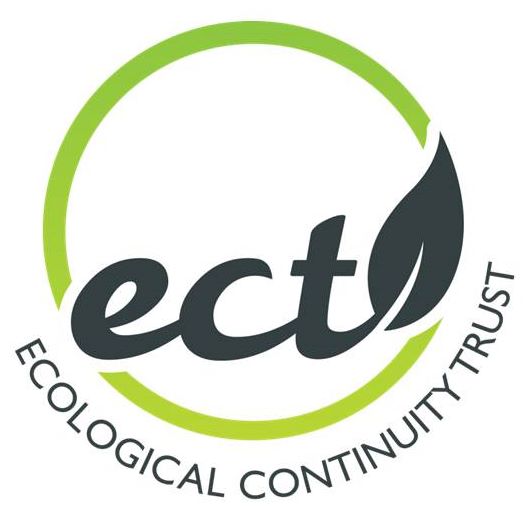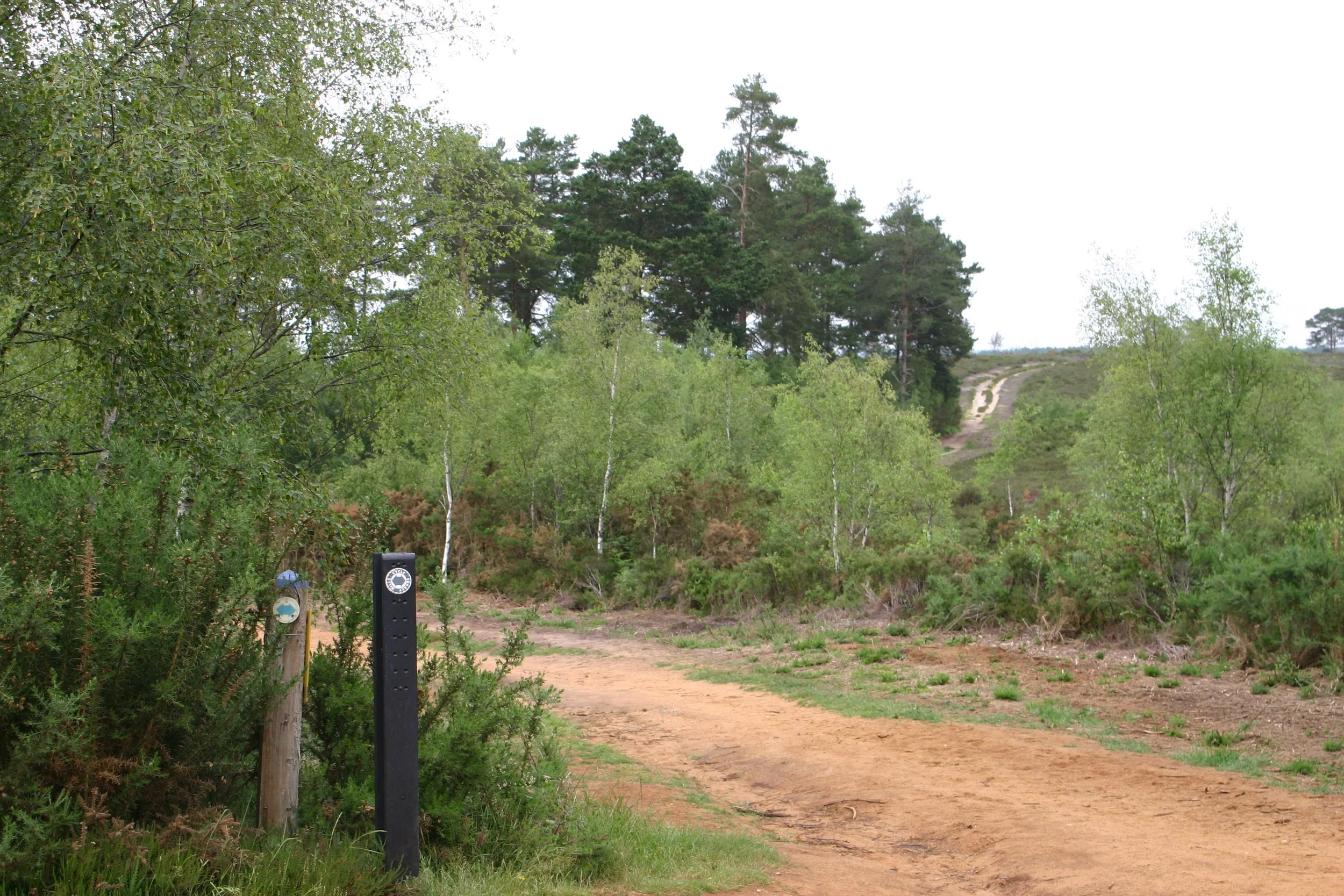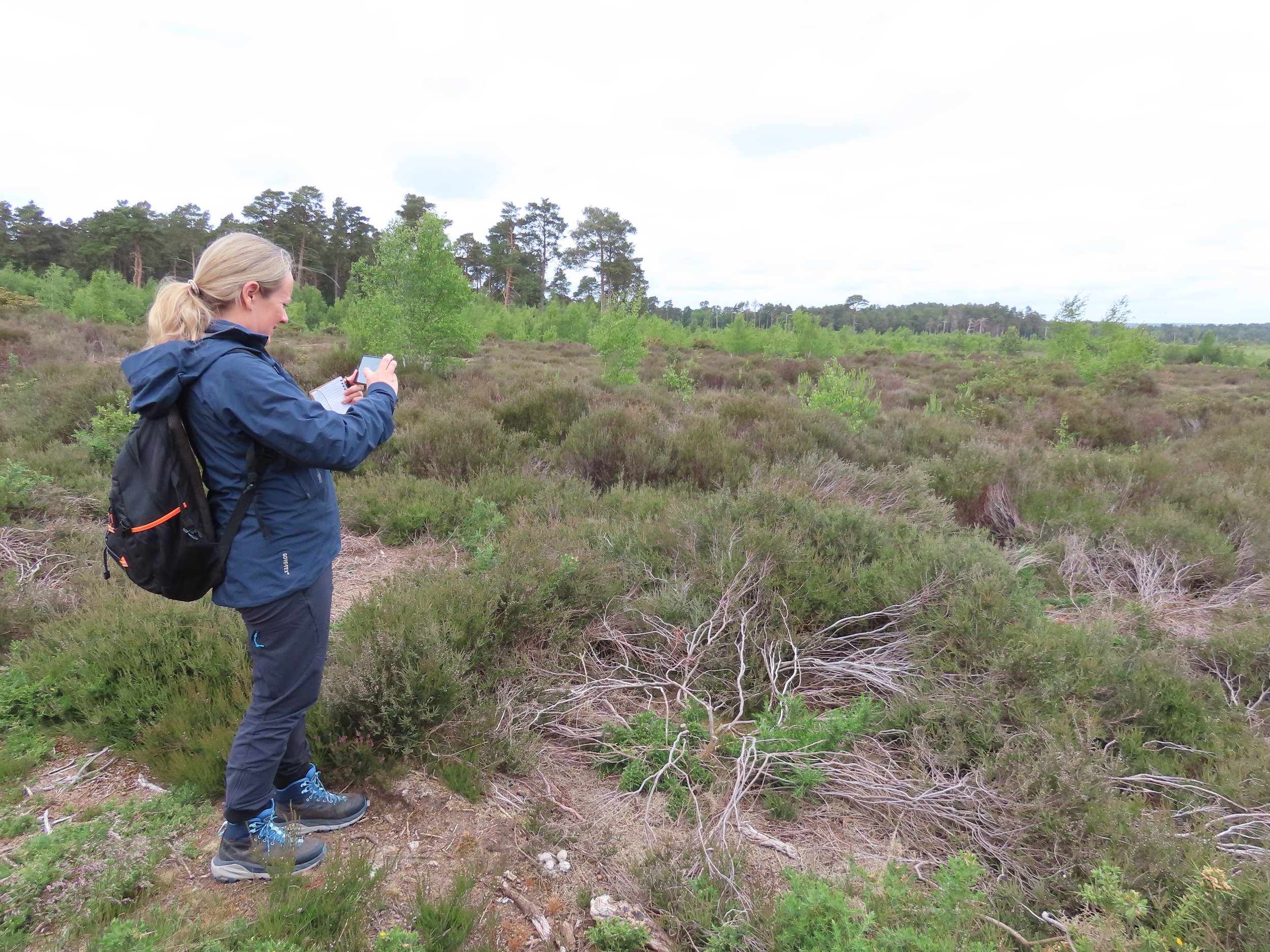Following a visit to Norway’s coastline for belowground heathland samples, staff from the Norwegian Institute of Bioeconomy Research were welcomed by the team at Thursley Common.
Funding from the ECT enabled the set up of 30 experimental plots as an extension to the long-term experiment at Thursley Common which investigates how air pollution affects heathlands and its recovery. In late 2024, the UK Air Pollution Recovery Indicators (APRI) heathland team, Royal Botanic Gardens Kew (RBG), Natural History Museum (NHM), and the Norwegian Institute of Bioeconomy Research (NIBIO) collaborated to obtain samples from six sites along Norway’s coast in order to compare how heathlands in low-polluted areas look belowground.
On 26 and 27 May 2025, the UK (APRI) heathland team (Jill Kowal, Laura M. Suz, Ruairi Hafferty-Hay and Elena Arrigoni, RBG Kew’s Mycorrhizal Ecology Team; Jeffrey Duckett and Silvia Pressel, NHM London) were delighted to welcome their Norwegian partners Liv Guri Velle, Pål Thorvaldsen and Anders Nielsen from the NIBIO to Thursley Common.
Following in the footsteps of Linnaeus, two centuries ago, our visitors admired the two contrasting Ulex species at Thursley were impressed by the vigorous growth of Calluna and its maturation cycle. They were particularly struck by senescent phase leggy plants that had grown since the 2006 fire, and the abundance of the diminutive liverwort Cephaloziella divaricata that shares its mycobiont with the Ericaceae.
The interpretation board at Thursley funded by the Ecological Continuity Trust.
Liv Guri Velle photographing a leggy plant of Calluna on an area burnt in 2006 and Cephaloziella divaricata on an experimental plot.
From left to right: Silvia pressel, Jill kowal, elena arrigoni, Pål Thorvaldsen, Liv guri velle, anders nielsen. The Cryptogamic Herbarium at the Natural History Museum with over a million bryophyte specimens.
Back at the Natural History Museum (with its cryptogamic herbarium containing over 1 million bryophyte specimens from every continent), Silvia Pressel showed the visitors our library of scanning electron micrographs of Calluna roots and their microbiome fungi. Whilst at Kew they saw the application of the latest artificial intelligence methods developed by the team to record fungal frequencies in roots.
The overall view is that we are a highly functional multidisciplinary team with the capacity to develop further heathland restoration projects in the long term. We are now busily analysing the results of the added nitrogen experiment set up in 2023.





